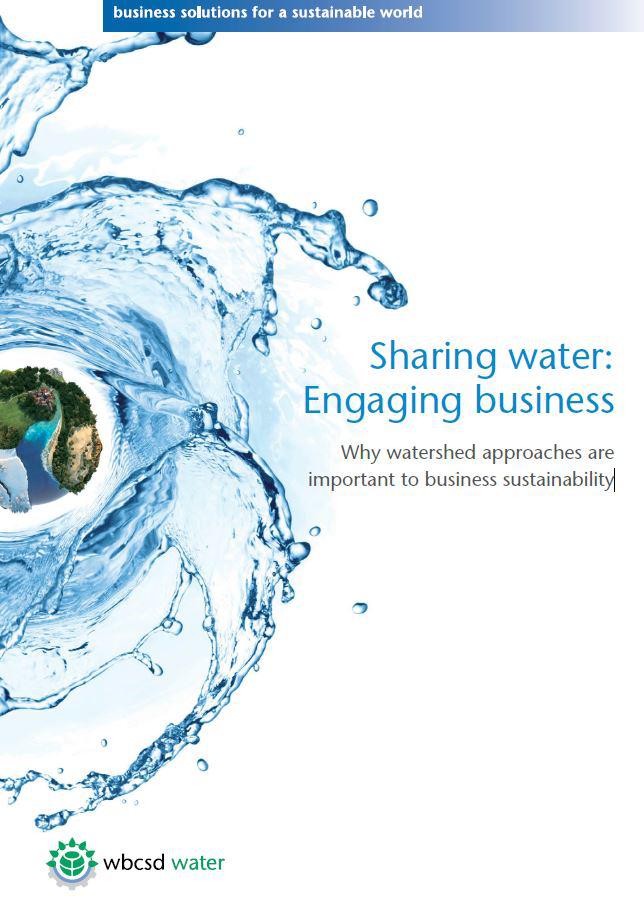
Business has a critical role to play in applying its expertise and experience in developing, implementing and scaling-up, through partnerships, watershed focused solutions. Over the next 20 years, a broader focus on water management beyond the “fence-line” – outside the company – is needed by businesses to ensure the sustainable use of one of the world’s finite resources.
Companies should adopt a more holistic “watershed approach,” which takes into consideration upstream and downstream interactions, and direct and indirect impacts, and recognizes the needs of the environment. It also recognizes that landuse changes can impact water availability. For businesses, local participation in the collective management of water will be key to ensuring long-term access to the resource in the context of competing demands.
Competing demands for water intersect at the river basin or watershed level. Balancing these competing demands to achieve sustainable water management will have the greatest chance for success if undertaken at the watershed level, inclusive of, and resonating with, all shareholders of the resource within the river basin: government; business, including energy providers; agriculture; and communities.
Well managed river basins provide services that are essential to business continuity and society. Water security and quality depend on the services provided by healthy watersheds. Their fundamental role in addressing the widening gap between global water demand and supply needs to be widely recognized and acted upon by all.
A number of leading companies have started to develop engagement plans, recognizing the localized nature of water availability, demand and quality, as well as that their water security depends on the security of others. However, business faces several challenges in undertaking such an approach: for example a lack of established governance systems, weak participatory processes, and the difficulty of getting internal high-level commitment in the absence of clear quantifiable benefits.
Robust and fair allocation systems will have to balance domestic, industrial and agricultural sector water needs, and collaboration at the river basin level is the best way to manage this process. Effective governance models that can deal with this competition in a regulated or consensus way will be critical to success.
Today the value of water is significantly underestimated by many. This is changing. With increased pressure on water resources, governments and businesses are focusing on better understanding the true value and pricing of water. A growing trend towards valuing externalities can inform allocation decisions and build better business management decisions.
To accelerate the impact of business actions, there needs to be a shift from:
- Cooperating within sectors to collaborating across sectors (for example, from recycling within an industrial plant to partnering with different industries, farmers or municipalities to increase water reuse)
- Focusing uniquely on managing risk to seeing opportunities (within agriculture for example, from micro-drip irrigation and drought resistant crops to optimized water and nutrient delivery practices and technologies)
- Inside the fence-line to watershed-based collaboration that effectively engages other stakeholders to improve the shared management of water
- Taking water for granted to recognizing the value of water, or more broadly the value of the services provided by ecosystems, to guide better investment decisions.

